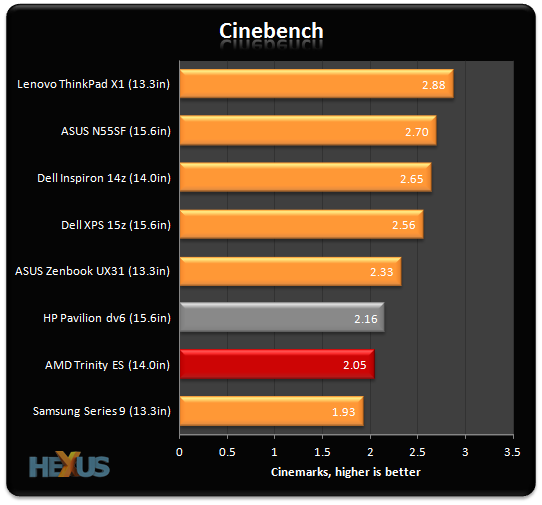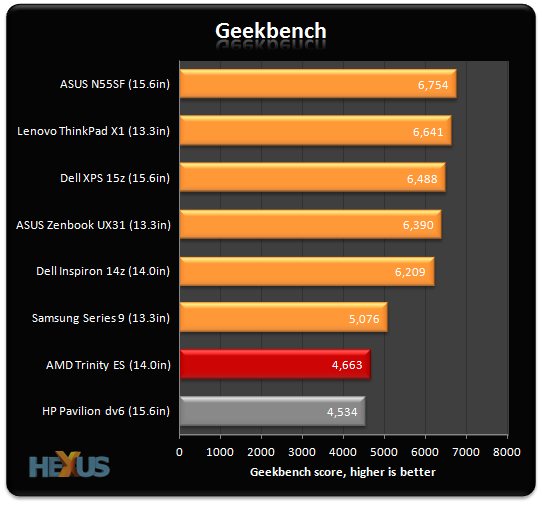CPU and Memory Performance

Cinebench stresses as many CPU cores as it can lay its compute hands on. Based on the engine behind the award-winning animation software, it provides a practical use for today's super-fast CPUs. The majority of Intel Sandy Bridge laptops are quicker than either AMD offering, and we'd suspect as much when taking into account the focus each company has paid in the trade-off between CPU and GPU power. However, of most interest, is the fact that AMD's shiniest Trinity technology is beaten by year-old Llano.
The chip inside the HP laptop is clocked in at 1.7GHz and Turbos up to 2.4GHz if the workload and TDP allows. Meanwhile, the Trinity chip ramps up from a default 2.3GHz to 3.2GHz, again if there's scope to do so. Factor in the newer Piledriver architecture and the Trinity A10 APU should wipe the proverbial floor with the Llano A6. So why doesn't this happen, you may ask. You see, the underlying Bulldozer CPU architecture has a poor IPC-per-core throughput in a number of compute-intensive applications; an eight-core FX-8150 desktop chip barely beats out a slower-clocked six-core Phenom II processor in the equivalent desktop test. While it is manifestly newer than the 'Stars' cores in the Llano APU, Trinity's CPU portion is actually rather weak, all things considered.

Geekbench also hammers the CPU with gay abandon. Taking in the reasoning explained above, it's not wholly surprising to see the engineering-sample laptop lag near the bottom of the graph. Throwing in a proviso for a second, the comparatively poor performance may be, in part, attributable to the pre-production nature of the laptop.









